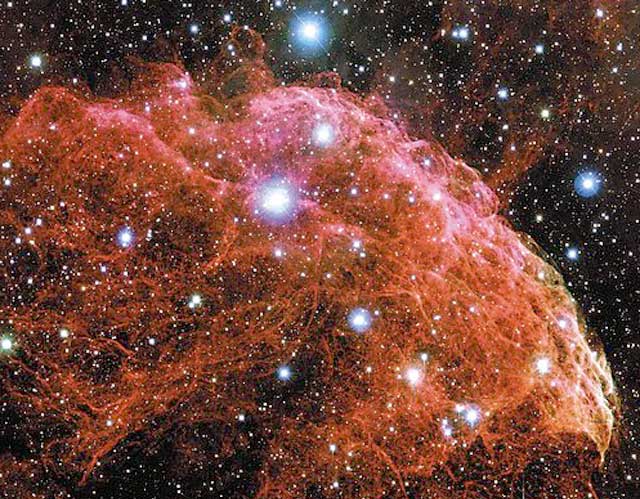Explanation: About 8000 years ago, a star in our Galaxy exploded. Ancient humans might have noticed the supernova as a temporary star, but modern humans can see the expanding shell of gas even today. Pictured above, part of the shell of IC 443 is seen to be composed of complex filaments, some of which are impacting an existing molecular cloud. Here emission from shock-excited molecular hydrogen is allowing astronomers to study how fast moving supernova gas affects star formation in the cloud. Additionally, astronomers theorize that the impact accelerates some particles to velocities near the speed of light. Supernova remnant IC 443 is also known to shine brightly also in infrared and X-ray light.
1999 2000 2001 2002 2003 2004 2005 2006 2007 2008 2009 2010 2011 2012 2013 2014 2015 2016 2017 2018 2019 2020 2021 2022 2023 2024 2025 |
Январь Февраль Март Апрель Май Июнь Июль Август Сентябрь Октябрь Ноябрь Декабрь |
NASA Web Site Statements, Warnings, and Disclaimers
NASA Official: Jay Norris. Specific rights apply.
A service of: LHEA at NASA / GSFC
& Michigan Tech. U.
|
Публикации с ключевыми словами:
supernova - supernova remnant - Сверхновые - остаток Сверхновой
Публикации со словами: supernova - supernova remnant - Сверхновые - остаток Сверхновой | |
См. также:
Все публикации на ту же тему >> | |
